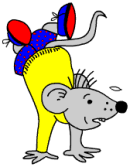 The work on subtraction facts in year 3 is very similar to that in year 2. Constant practice and re-inforcement is necessary if children are going to become quick in their responses – the numbers do not necessarily have to be larger, but a more rapid answer should be expected.
The work on subtraction facts in year 3 is very similar to that in year 2. Constant practice and re-inforcement is necessary if children are going to become quick in their responses – the numbers do not necessarily have to be larger, but a more rapid answer should be expected.
A similar list of words and phrases should be used as for year 2, including:
take away, subtract, how many are left, less than,
what is the difference between, more than, how many more to make ….
It is expected that the minus (–) sign can be read and written.
Most of the work will still be done orally. All kinds of opportunities arise where simple subtraction questions can be posed, but the numbers do need to be kept simple.
A number line or a number square is useful for harder examples so that children can see the movement down the line as numbers are subtracted. Coins, counters or cubes are also excellent resources for practical subtraction exercises.
Children should understand that subtracting from a positive number makes the number less and that subtraction is the opposite, or inverse of, addition.
The idea that subtracting 0 leaves a number unchanged also needs to be re-inforced and children need to realise that 40 – 30 is not the same as 30 – 40 (unlike addition where 40 + 30 is the same as 30 + 40).
Most of this module involves written answers, although the next page gives some examples of the type of question to ask. Keep the numbers simple, rapid (instant) recall of facts up to 20 and quickening responses to whole tens and hundreds questions.
Free Y3 maths worksheets: Subtraction – oral questions
Free Y3 maths worksheets: Subtraction – with a number square